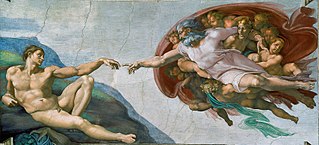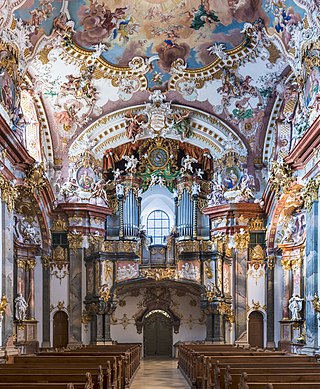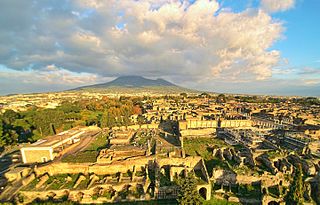The topic of this article may not meet Wikipedia's notability guideline for academics .(August 2021) |
Jean-Pierre Adam (born 24 November 1937 in Paris) is a French architect and archaeologist specialising in ancient architecture.
The topic of this article may not meet Wikipedia's notability guideline for academics .(August 2021) |
Jean-Pierre Adam (born 24 November 1937 in Paris) is a French architect and archaeologist specialising in ancient architecture.
Adam was born in Paris. Following a special diploma from the School of Architecture in 1965, [1] he entered the ancient architecture department of the CNRS. He produced several monumental studies in France and worldwide, and became director of the Office of Ancient Architecture of Paris, located in the north tower of the Castle of Vincennes.
He has conducted various studies on architectural excavation sites of various Ancient Roman, Greek and Egyptian sites around the Mediterranean, including in Pompeii [2] and in 1999 he published a book about Roman architecture entitled Roman Building: Materials and Techniques . [3] Previously, he had also excavated the Tomb of Akhethetep in Saqqarah along with Christiane Ziegler and Guillemette Andreu-Lanoë between 1991 and 1999, publishing their findings in a book. He has authored books on Greek architecture L'architecture militaire grecque (2000) as well as on Ancient Egypt, Les pyramides d'Égypte. He has conducted research at the Institute de Recherche d' Architecture Antique. [4]
As of 2021, he was teaching at the École du Louvre, the École de Chaillot, the École d’architecture de la ville et des territoires Paris-Est and the École Polytechnique Fédérale de Lausanne (EPFL); he had also held positions in Paris, Rome and the Lebanon. [5]

Fresco is a technique of mural painting executed upon freshly laid ("wet") lime plaster. Water is used as the vehicle for the dry-powder pigment to merge with the plaster, and with the setting of the plaster, the painting becomes an integral part of the wall. The word fresco is derived from the Italian adjective fresco meaning "fresh", and may thus be contrasted with fresco-secco or secco mural painting techniques, which are applied to dried plaster, to supplement painting in fresco. The fresco technique has been employed since antiquity and is closely associated with Italian Renaissance painting.

Furniture refers to objects intended to support various human activities such as seating, eating (tables), storing items, working, and sleeping. Furniture is also used to hold objects at a convenient height for work, or to store things. Furniture can be a product of design and can be considered a form of decorative art. In addition to furniture's functional role, it can serve a symbolic or religious purpose. It can be made from a vast multitude of materials, including metal, plastic, and wood. Furniture can be made using a variety of woodworking joints which often reflects the local culture.

Neoclassicism, also spelled Neo-classicism, emerged as a Western cultural movement in the decorative and visual arts, literature, theatre, music, and architecture that drew inspiration from the art and culture of classical antiquity. Neoclassicism was born in Rome, largely due to the writings of Johann Joachim Winckelmann during the rediscovery of Pompeii and Herculaneum. Its popularity expanded throughout Europe as a generation of European art students finished their Grand Tour and returned from Italy to their home countries with newly rediscovered Greco-Roman ideals. The main Neoclassical movement coincided with the 18th-century Age of Enlightenment, and continued into the early 19th century, eventually competing with Romanticism. In architecture, the style endured throughout the 19th, 20th, and into the 21st century.

Néo-Grec was a Neoclassical Revival style of the mid-to-late 19th century that was popularized in architecture, the decorative arts, and in painting during France's Second Empire, or the reign of Napoleon III (1852–1870). The Néo-Grec vogue took as its starting point the earlier expressions of the Neoclassical style inspired by 18th-century excavations at Pompeii, which resumed in earnest in 1848, and similar excavations at Herculaneum. The style mixed elements of the Graeco-Roman, Pompeian, Adam and Egyptian Revival styles into "a richly eclectic polychrome mélange." "The style enjoyed a vogue in the United States, and had a short-lived impact on interior design in England and elsewhere."

A meander or meandros is a decorative border constructed from a continuous line, shaped into a repeated motif. Among some Italians, these patterns are known as "Greek Lines". Such a design may also be called the Greek fret or Greek key design, although these terms are modern designations even though the decorative motif appears thousands of years before that culture, thousands of miles away from Greece, and among cultures that are continents away from it. Usually the term is used for motifs with straight lines and right angles and the many versions with rounded shapes are called running scrolls or, following the etymological origin of the term, may be identified as water wave motifs.

In architecture and decorative art, ornament is decoration used to embellish parts of a building or object. Large figurative elements such as monumental sculpture and their equivalents in decorative art are excluded from the term; most ornaments do not include human figures, and if present they are small compared to the overall scale. Architectural ornament can be carved from stone, wood or precious metals, formed with plaster or clay, or painted or impressed onto a surface as applied ornament; in other applied arts the main material of the object, or a different one such as paint or vitreous enamel may be used.

The study of the economies of the ancient city-state of Rome and its empire during the Republican and Imperial periods remains highly speculative. There are no surviving records of business and government accounts, such as detailed reports of tax revenues, and few literary sources regarding economic activity. Instead, the study of this ancient economy is today mainly based on the surviving archeological and literary evidence that allow researchers to form conjectures based on comparisons with other more recent pre-industrial economies.

Opus craticum or craticii is an ancient Roman construction technique described by Vitruvius in his books De architectura as wattlework which is plastered over. It is often employed to construct partition walls and floors. Vitruvius disparaged this building technique as a grave fire risk, likely to have cracked plaster, and not durable. Surviving examples were found in the archaeological excavations at Pompeii and more so at Herculaneum, buried by the eruption of Mount Vesuvius in 79 AD and excavated beginning in 1929.

In architecture and the decorative arts, a mascaron ornament is a face, usually human, sometimes frightening or chimeric, whose alleged function was originally to frighten away evil spirits so that they would not enter the building. The concept was subsequently adapted to become a purely decorative element. The most recent architectural styles to extensively employ mascarons were Beaux Arts and Art Nouveau. In addition to architecture, mascarons are used in the other applied arts.

The Roman architectural revolution, also known as the concrete revolution, is the name sometimes given to the widespread use in Roman architecture of the previously little-used architectural forms of the arch, vault, and dome. For the first time in Europe, possibly in the world, the potential of these elements was fully appreciated and exploited in the construction of a wide range of civil engineering structures, public buildings, and military facilities. Throughout the Roman empire, from Syria to Scotland, engineers erected structures using semicircular arches. The first use of arches was for civic structures, like drains and city gates. Later the arches were utilized for major civic buildings bridges and aqueducts, with the outstanding 1st century AD examples provided by the Colosseum, Pont Du Gard, and the aqueduct of Segovia. The introduction of the ceremonial triumphal arch dates back to Roman republic, although the best examples are from the imperial times.

The Baalbek Stones are six massive Roman worked stone blocks in Baalbek, Lebanon, characterised by a megalithic gigantism unparallelled in antiquity.
Christiane Ziegler, is a French Egyptologist, curator, director emeritus of the Department of Egyptian Antiquities of the Louvre Museum and editorial director of the archaeological mission from the Louvre Museum at Saqqara, Egypt.

The Temple of Jupiter is a colossal Roman temple, the largest of the Roman world after the Temple of Venus and Roma in Rome. It is situated at the Baalbek complex in Heliopolis Syriaca, It is unknown who commissioned or designed the temple, nor exactly when it was constructed. Work probably began around 16 BC and was nearly complete by about ??AD. It is situated at the western end of the Great Court of Roman Heliopolis, on a broad platform of stone raised another 7 m (23 ft) above the huge stones of the foundation, three of which are among the heaviest blocks ever used in a construction. Cultic activity had long taken place at the site; the temple presumably replaced an earlier one, possibly using the same foundation.

Neoclassicism is a movement in architecture, design and the arts which emerged in France in the 1740s and became dominant in France between about 1760 to 1830. It emerged as a reaction to the frivolity and excessive ornament of the baroque and rococo styles. In architecture it featured sobriety, straight lines, and forms, such as the pediment and colonnade, based on Ancient Greek and Roman models. In painting it featured heroism and sacrifice in the time of the ancient Romans and Greeks. It began late in the reign of Louis XV, became dominant under Louis XVI, and continued through the French Revolution, the French Directory, and the reign of Napoleon Bonaparte, and the Bourbon Restoration until 1830, when it was gradually replaced as the dominant style by romanticism and eclecticism.
Roland Étienne is a French archaeologist and historian specialising in the history of Greek archaeology, ancient architecture and Hellenistic history.
Roberto Gargiani is an Italian architectural historian and a full professor at the École Polytechnique Fédérale de Lausanne (EPFL).

Several non-native societies had an influence on Ancient Pompeian culture. Historians’ interpretation of artefacts, preserved by the Eruption of Mount Vesuvius in 79, identify that such foreign influences came largely from Greek and Hellenistic cultures of the Eastern Mediterranean, including Egypt. Greek influences were transmitted to Pompeii via the Greek colonies in Magna Graecia, which were formed in the 8th century BC. Hellenistic influences originated from Roman commerce, and later conquest of Egypt from the 2nd century BC.

The architecture of Paris and its nearest surrounding suburbs in the era of absolutism went through several important historical stages: the transition from Flamboyant to the Renaissance, the emergence of the "Jesuit style" and mannerism, the birth of Baroque and Classicism, the rise of the decorative Rococo style. The Italian Wars had a great influence on Parisian architecture and urban planning, during which the court of Louis XII became acquainted with the ideas of the Italian Renaissance.
Roman Building: Materials and Techniques is a treatise on Roman construction by French architect and archaeologist Jean-Pierre Adam, first published in 1984. A second edition was published in 1989, and an English translation by Anthony Mathews was published in 1994. The book comprehensively studies architecture across the Roman empire throughout its history, focusing on technique rather than design.